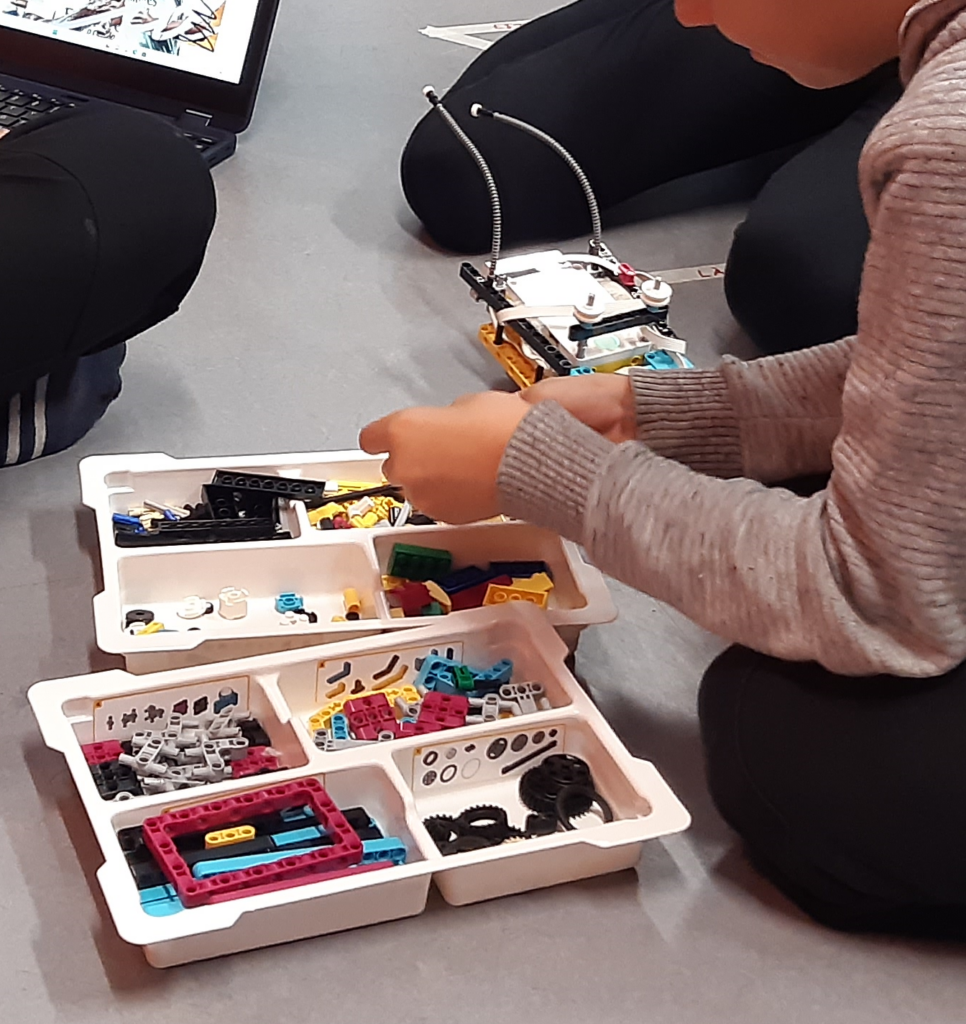
Coding and robotics in a grade four classroom in Finland – reflections
Coding and robotics in Finland is taught throughout the school path from early grades on. It is not a subject on its own, but it is integrated into other subjects related to computational thinking. The programme starts from the early age to give learners the opportunity to get used to it and to help students in building their confidence in working with it from the early age. Learners also start using the laptops at the early stage and build confidence as early as in grade one. The school also have sufficient resources which makes it easier for the coding and robotics to be successfully implementable across all subjects. Each classroom has enough laptops in the cupboard for that particular class. Each class is well resourced with a projector mounted permanently with working laptops connected to the projector and screen.
We also noted that, before the lesson starts, learners are shown a video clip relevant to the topic of the lesson or they sing a song. Once the outline of the task was given, verbally at first and then visually via a short video, the class was left to continue on their own. The teacher would constantly walk around the classroom checking on the progress of the children and asking/answering questions. The class was constantly timed to ensure they were on track with their tasks.
It was difficult to understand what the tasks were and what the responses from the children was as they were taught in Finnish, which we did not understand. Even though the teacher explained the basics of the lesson could read the written tasks using Google Translate. This helped tremendously.

Working with Lego robots
The introduction of the Lego Prime robotics was integrated into one of the subjects. Once again instructions were given, children divided into groups of three, and the class continued on their own. The class was given a complicated task to complete using the Lego robot as a means to solve the task. It was interesting to watch as the different groups focussed on different aspects of the task, for example some groups enjoyed personalising their robots before continuing with the task. Others focused more on completing the next challenge. The children had a little difficulty with the coding for one of the tasks, the teacher noticed this and agreed that a little more work in coding had to be covered before completing that particular task. The focus for these lessons is not on building robots or coding them, but in using the robots to assist in teaching computational thinking.
Image: Fourth graders experiencing robotics hands-on (picture: Jari Lavonen)
Final thoughts
On day one of our observation, the class was well organised and learners were disciplined and following the teacher’s instructions. The lesson of the day met it’s intended aim, it was well supported by the use of digital technology.
About the research project “Learning to Design – Designing to Learn” (LDDL)
The “Learning to Design – Designing to Learn” (LDDL) project is a research collaboration between the University of Helsinki and the University of Johannesburg and aims to ensure inclusive and equitable quality education as well as to promote continuous learning opportunities for all. We will conduct research on pupils learning in post 4IR era through the design of digital artifacts, such as Lego-robots, videoclips, and reports in the context of science, technology, engineering, and mathematics (STEM) teaching and learning.
The proposed project will support researchers and teachers in research-practice partnership (RPP) design STEM project-based learning (PBL) modules, which engage primary pupils in designing digital artifacts in order to research pupils’ design processes and their learning of transversal and sustainability competences, especially creative, critical and computational thinking skills in low-income areas of South Africa and in Finland. RPP will support researchers and teachers learning and the adoption of the designed innovative teaching modules.
The project received GINTL project funding from the University of Helsinki for the funding period 2022-2024. Principal investigator of the project is Anni Loukomies, PhD.













